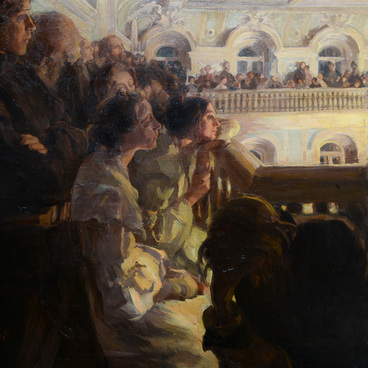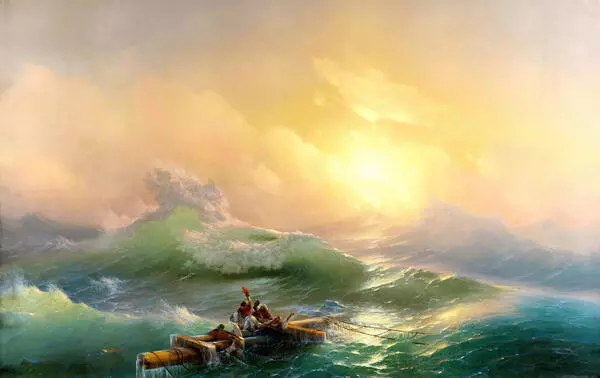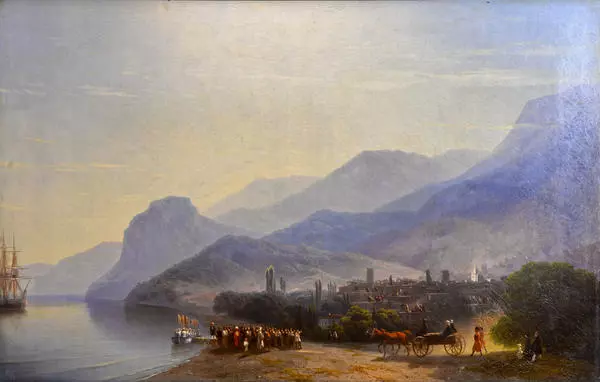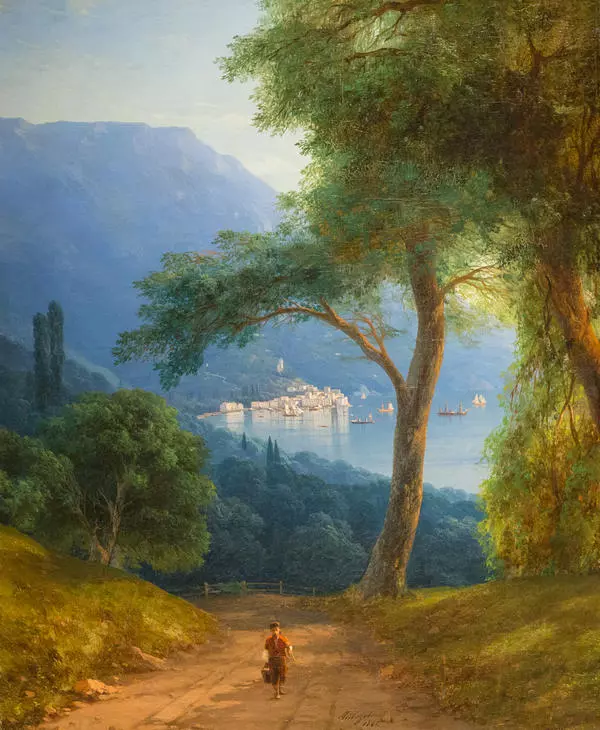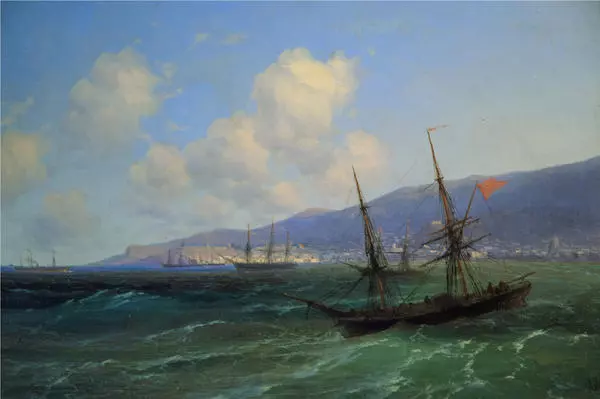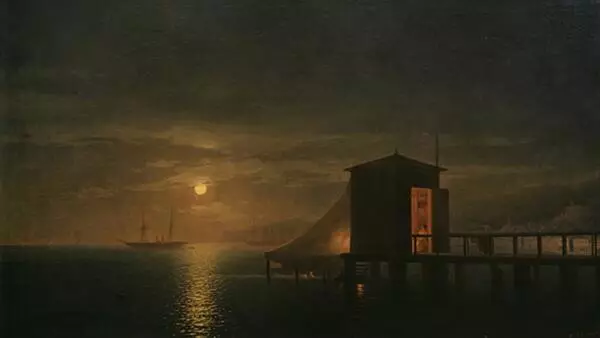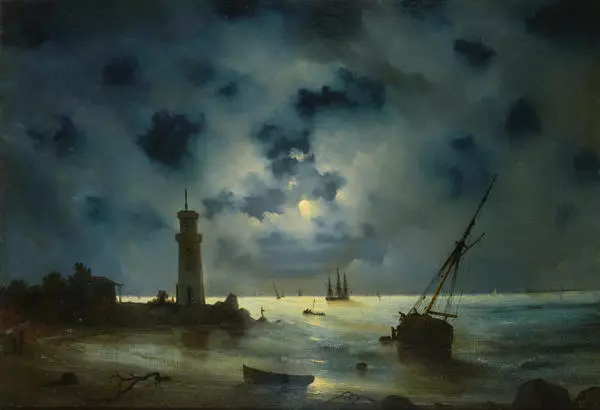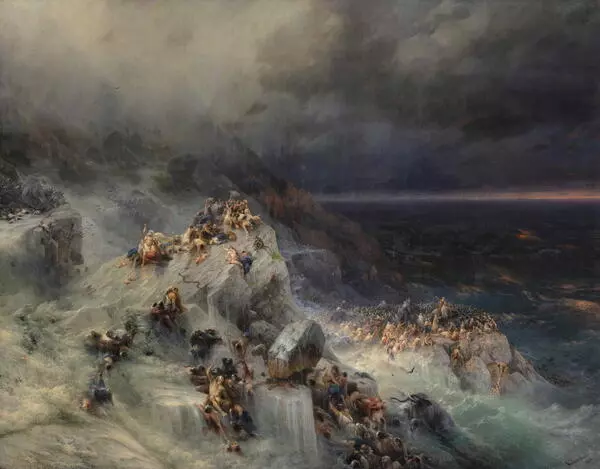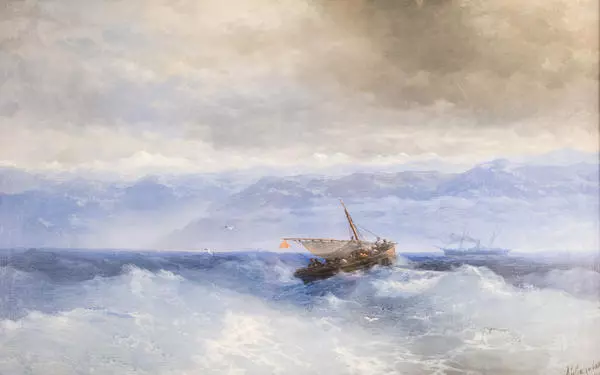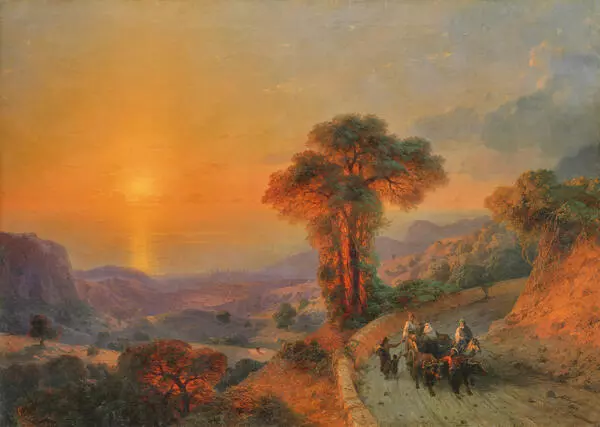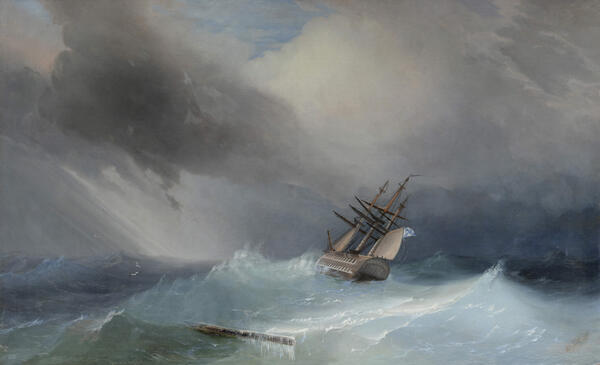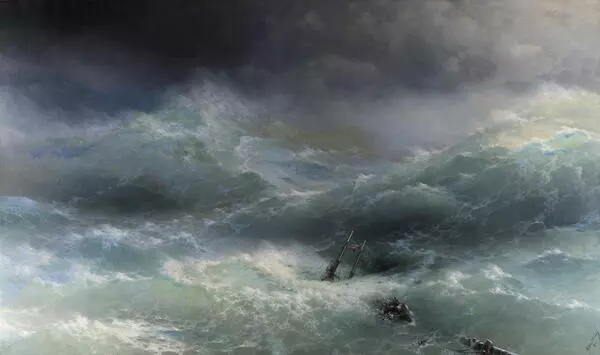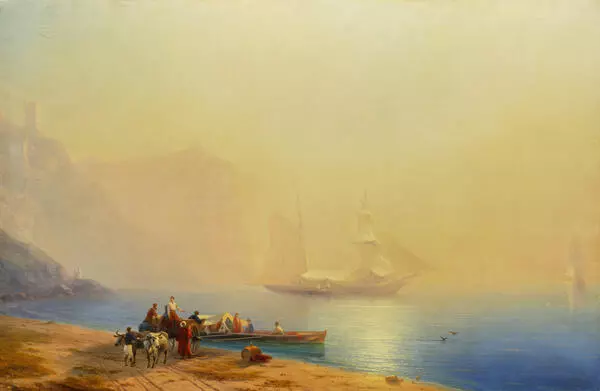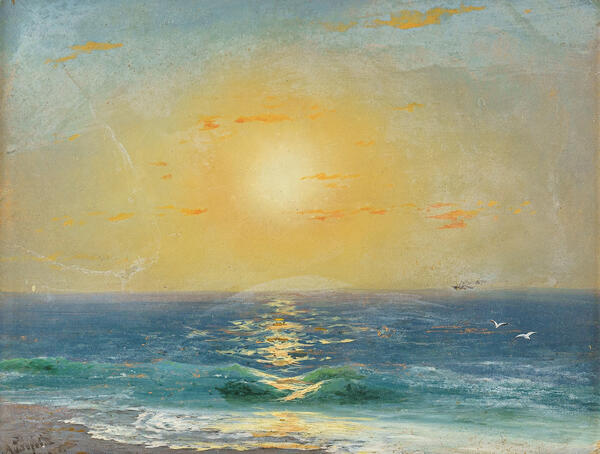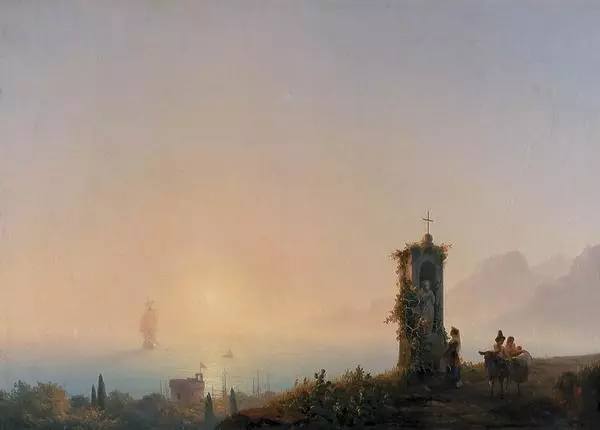“Seascape” by the outstanding marine painter Ivan Konstantinovich Aivazovsky is rightfully considered the gem of the permanent exhibition of the Nizhny Tagil Museum of Fine Arts. Aivazovsky depicted the ancient Italian port city of Palermo from the Tyrrhenian Sea and the famous Conca d’Oro flat lands.
Hovhannes Aivazian, known in Russia as Ivan Aivazovsky, became one of the most popular artists of the 19thcentury and the most famous master of marine art — the art of depicting the sea. The artist’s father changed the family’s Armenian surname “Aivazian” to “Gaivazovsky” because he liked its Polish sound. The young Ivan Aivazovsky quickly earned recognition and found admirers of his artistic and musical talent. In 1833, he entered the Imperial Academy of Arts and, while still studying there, was appointed assistant to the fashionable painter Philippe Tanneur. Although his teacher forbade him to paint on his own, Aivazovsky displayed his paintings at the Academy’s fall exhibition. Following a complaint from the teacher, Emperor Nicholas I ordered the young artist’s works to be taken down. The disobedient student was forgiven six months later and sent to the class of battle painting. In several years, he became one of the leading artists in the Russian Empire.
As a painter of the Main Naval Staff, Ivan Aivazovsky traveled extensively throughout the country. His permanent residence was in Feodosia where he founded an art school and an art gallery, initiated the construction of a railroad, and contributed to the research of ancient burial mounds and the protection of historical monuments. Thanks to his legendary artistic memory, Aivazovsky painted “from memory” without using studies.
Along with the sea itself, the high sky and humid
sea air are the main characters of “Seascape” by Ivan Aivazovsky. The artist
treated fine weather in the same heartfelt manner as storms. In the 1860s–1870s, the famous
marine artist, who believed that a painting must invoke a certain emotional
state in the viewer, moved away from the turbulent passions and
destructive nature that were characteristic of his earlier work. The artist’s
fascination with the raging and powerful sea became less prominent as he
abandoned additional effects and bright colors and created paintings known as
“blue marines”. “Seascape” belongs to this type of painting.


